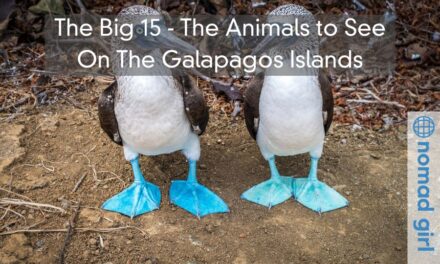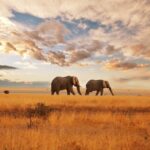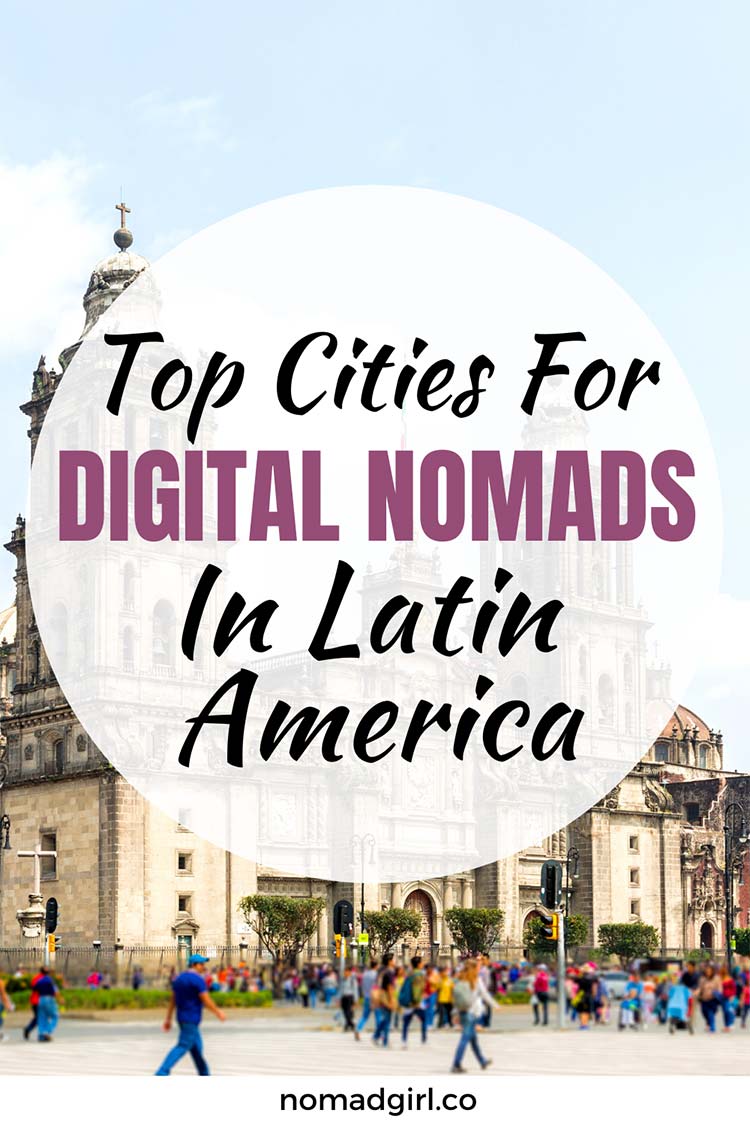If you only have a week or two to spend in Colombia, your decision on where to travel in Colombia will likely boil down to one question. Will you start in central Colombia or head straight for the coast?
Unless you plan to spend an absolute minimum of two weeks in Colombia, you will be able to get a flavour for both, but any less and you will be forced to make a tricky decision. And even if you plan to stay in the country for several weeks, how do you know where is the best choice for you to spend most of your time?
Central Colombia is a delight offering you great cities as well as stunning landscapes. The coast, offers sea-side colonial paradises, palm trees and endless Caribbean-style beaches.
The areas are so different, both in culture and climate, that they often feel like different countries. And with about a thirty-hour bus journey or a flight departing the two, a decision about where to travel should not be taken lightly.
Many travellers to Colombia choose to fly into Bogota (this is usually the cheaper flight option also). From here they may explore surrounding areas before taking a flight up to Cartagena or Santa Marta. Other travellers fly straight into these destinations and spend a few weeks solely enjoying the vast coastline.
So how to decide where to go and spend your time? Here is the ultimate showdown between central Colombia and the Coast and where to travel in Colombia.
Cities
When I refer to central Colombia, I am generally referring to the area of Colombia known as Antioquia. This area is a top tourist region with attractions such as Bogota, Medellin and Salento to name but a few. The coastline I am referring to is the North or Caribbean coast, again the more popular destination for travellers.
Two of the major cities in the country lie in Antioquia. Of course, the sprawling capital of Bogota is an important one but the effortlessly trendy Medellin is fast becoming a haunt for nomads, travellers and those who enjoy the modern metropolis.

Medellin by night
Bogota boasts a stunning historic centre called La Candelaria which is dotted with expansive plazas, cobble-stoned streets and impressive cathedrals. Doing a walking tour here is an amazing way to get to grips with Colombian history and culture and it is also a great destination for trying out the local cuisine.

Bogota
Medellin is a totally different vibe to Bogota with its modern metro traversing the city as well as the trendy bars and restaurants of tourist hotspot El Poblado. Medellin is a place to be seen and you will likely spend a lot of your time in hipster cafes and effortlessly chic outdoor bars.
On the other hand, on the coast of Colombia, you have the picturesque city centre of Cartagena. This gorgeous old town and fortress look out over the Atlantic ocean. While the city is significantly more touristy, it is truly beautiful and not to be overlooked.

Cartagena
Santa Marta is an unassuming and authentic city on Colombia’s coast. It has a small, quiet and charming colonial centre and definitely gives a more realistic insight into Colombian lifestyle than other cities. Many visitors say that it is just a gateway to the other attractions in the region, but as a way of experiencing true culture, Santa Marta should not be overlooked.

Santa Marta Taganga Bay
Verdict: Central (The dual forces of Bogota and Medellin just about take the crown when it comes to cities).
Nature
A great natural attraction in Medellin is Parque Arvi, a stunning natural park boasting picnic areas and walking trails. To get here, one must take one of the fabled cable cars, part of the city’s impressive public transportation system, and head up over hillside communities and into the park. A true experience from start to finish.

Parque Arvi Medellin
Outside Medellin, perhaps the most stunning attraction in the area is Valle de Cocora, located just outside the charming market town of Salento.
Here one can hike into the valley to take in the stunning landscape of wax palm trees, some of the tallest palm trees in the world. Known as a cloud forest, there is something magical about watching the clouds drift in and out of these majestic trees.
Meanwhile, the coast also offers a plenitude of attractions. Cartagena’s centre offers you instant access to dozens of small islands located just off its coast. You can take many day trips here or book into many of the stunning island resorts in the area.
Further along the coast, just outside Santa Marta lies Tayrona Nacional Natural Parque, fast becoming one of Colombia’s most visited attractions. This national park offers stunning trails and hikes through beaches, palm trees and forests to arrive at picturesque inlets ideal for camping, bathing or swimming.

Parque Nacional Natural Tayrona
Though it can get a little busy, the park is huge and you can easily spend many days here exploring.
Another huge draw for the coast is, of course, the Ciudad Perdida or the Lost City Trek. Only discovered twenty years ago, many believe that this trek will over time rival the infamy of the Inca Trail to Machu Picchu.
It takes three longs days of difficult hiking to get to the lost city but the trek is more than worth it and many visitors cite the sense of accomplishment they feel when they reach the end (it even works the endless mosquito bites and sweating).
Last but not least is the beautiful mountain town of Minca, located just a thirty-minute drive from Santa Marta. This stunning town nestled up in the trees boasts a variety of eco-lodges and hostels located high up in the hillside. It is truly magical to wake up and experience the expanse of mountains with the coast and Santa Marta visible in the distance.
Here you can do many walks, coffee tours, cacao tours as well as visit numerous waterfalls and get pictures in the infamous hammocks overlooking the mountains. Perfect for Instagram.
Verdict: With ancient lost cities, mountain paradises and expansive national parks, the Coast clearly takes this round.
Attractions
Central Colombia boasts pretty architecture in its cities as well as lots of opportunities for museums and walking tours.
Comuna 13 in Medellin is a true up and coming attraction. The area was once known for being the most dangerous neighbourhood in all of Medellin during parts of the long civil war in the country.

Now the community has been transformed by a series of initiatives focused on rehabilitating the area through art and culture. Now Comuna 13 is a bustling community free to visit by tourists with endless stunning graffiti art, street performances and markets.
Locals are eager to welcome tourists and are insanely proud by the progress that has been made here. You can make your own way to Comuna 13 or take one of the organised free walking tours and graffiti tours in the area.
Medellin’s free walking tour with Real City Tours has been named as one of the best walking tours in South America. It truly is the perfect way to get to grips with Colombia’s history and the enduring impact of that history on locals who have lived through it. There is nothing better than taking a tour and feeling like you have a newfound appreciation for a country and its people afterwards.
Bogota’s historic centre also boasts many hidden gems including the Botero Museum. Nestled inside an impressive building lies a stunning collection filled with classical painters right up to more modern pieces.

Botero Museum
The main attraction, of course, is the large collection of works by Colombian artist Fernando Botero whose infamous style has become renowned in the country. Inside also lies a pretty cafe and restaurant which is the perfect place to put your feet up after a day of exploring.
On the coast, of course, a walking tour of Cartagena is highly recommended. Touring the old town with it’s towering walls, many museums and plazas is a great way to not only see the city but also take in the fascinating history of this seaside fortress.
Verdict: In terms of cultural tourist attractions, central wins out on this one!
Price
Thanks to an influx of tourism to the country, Colombia is generally considered to be rather expensive in comparison to other countries such as Bolivia, Ecuador and Peru.
And because of this, many of the attractions I have listed above have special tourist prices rather than local prices, especially on the coast which in many ways has become the tourist focal point of the country,
For example, a fixed price has been placed on a trek to the Lost City meaning that no tour agency can do the trek for less than 950,000 COP ($320 USD).
Tayrona Park is also hiking up its prices with entrance fees now costing 50,000 COP plus (just under $17 USD to get in for one day). Thankfully, public buses to the park are regular and relatively cost-effective at under 8,000 COP per person ($2.60 USD).
Similarly, Cartagena has become a huge resort for vacationers and travellers alike. It has become a tourist trap in every sense of the word meaning a meal inside the old city walls will cost up to triple of the cost it would be outside the walls.
Tours to the various Rosario Islands will cost around 170,000 COP ($56 USD) for a day trip to the pretty resorts around the islands.
You can operate on a significantly cheaper budget in central Colombia. For example, in Salento, you can visit the cloud forest and spend a day hiking here for less than 5,000 COP ($1.67).
In Medellin, fares up to Parque Arvi will set you back less than 8,000 COP ($2.60) for the return journey. Other in the city such as the Botanical Gardens and stunning Cast de la Memoria museum is free to the public to visit.
You can also take a multitude of free walking tours in Medellin after which you will be asked just to pay reasonable tips (recommended tips tend to be between 10,000 to 20,000 COP per person or $3.30 – $6.60).
Lastly, Bogota also offers free entrance into the stunning Botero museum and just 4,000 COP ($1.30) into the Museo del Oro (gold museum).
Verdict: Due to drastically increased tourism, the main attractions on the coast have experienced hiked prices. Therefore you can be more cost-effective in the cities.
Accommodation
Staying in accommodation in Colombia prices range from the very cheap (28,000 COP or $9.30 USD for a decent hostel bed) to the more expensive (up to 50,000 COP or $16.70 per night for a very fancy hostel excluding breakfast). Stays in hotels and resorts will cost considerably more.
What is exciting about accommodations in Colombia though is that the hostels here are designed to excite and thrill so in turn, staying in these locations have become an attraction in itself.
Take, for example, El Rio hostel located on Colombia’s coastline. This stunning eco-friendly hostel was set up by two British travellers looking to create an eco-resort for backpackers and the hostel was voted Colombia’s best hostel in 2017.
The hostel is built beside a river and lies about an hour outside Santa Marta near the coast. Stunning open plan huts and a large outdoor hammock hut make for a comfortable but unique sleeping experience. Guests can relax by the river on a small beach, enjoy drinks at the bar, go kayaking or go tubing down the river.
Another attraction is Casa en el Agua. Booked out months in advance this stunning water hostel is an island in itself and therefore only accessible by boat. Because you cannot go anywhere else while here, food and drink prices are hiked.
But really, you are paying for the stunning lovely and experience of it.
In Minca too lies some stunning accommodation option, my personal pick being Nuevo Mundo. This eco-lodge looks out over the stunning countryside and offers delicious vegetarian meals for its guests. La Punta is a viewpoint where guests go to view the sunset and you can spend your days hiking, splashing in waterfalls or reading your book in one of the many hammocks overlooking those views.
You will feel like a better and healthier person for staying here.
While these novelty accommodations dot the coastline, the cities offer modern and stylish hostels to stay in. Rango hostel in Medellin provides all the style and service of a top hotel with a modern, trendy edge.
In Bogota, the old town is also lined with bespoke little hostels situated in old buildings screaming with charm and cosiness.
Verdict: By the sheer uniqueness of the hostels on the coast, the seaside abodes take it ( but just remember you will pay high prices to stay in them!).
Final Verdict
Having assessed travelling in Colombia through the best of nature, attractions, price and accommodation, it seems that there is no clear winner!
However, making the decision depends on the goals you want from your travels. Do you value price effectiveness over stunning locations? Would you prefer to do more with your money or visit the top (and most expensive) attractions in the country? Would you rather travel to less touristic places than the top ones?
It is clear that both areas of the country offer endless opportunities for fun, travel, sun and culture but what you want from your own trip, in the end, is totally up to you!
If you like this article please use the image below to share it via Pinterest.



















